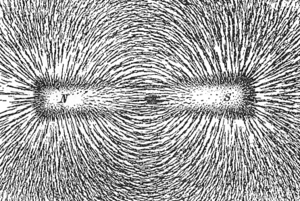How old is the earth's magnetic field?
Interview with
The earth's magnetic field is essential to life on our planet. It shields us from the  harsh conditions of space. The field is produced, we think, by the constant circulation of the earth's metallic liquid iron core. But how long the iron core has been flowing, and therefore the age of the planet's magnetic field, have been open questions that have led to a paradox, which, speaking with Connie Orbach, Stewart McWilliams thinks he can now solve...
harsh conditions of space. The field is produced, we think, by the constant circulation of the earth's metallic liquid iron core. But how long the iron core has been flowing, and therefore the age of the planet's magnetic field, have been open questions that have led to a paradox, which, speaking with Connie Orbach, Stewart McWilliams thinks he can now solve...
Stewart - The paradox - well it was proposed a couple of years ago. Really, it was clarified a couple of years ago and that is that when you have a very high thermal conductivity in the Earth's core of iron at these conditions, it's very hard to sustain the Earth's magnetic field. The heat is removed out of the core relatively quickly and there's not enough energy left to support the vigorous kind of motion that produces the Earth's magnetic field.
Connie - So this paradox lays out a problem. We have a highly conducting molten core of iron but, if it's highly conducting, then either:
1) the Earth's magnetic field couldn't have been around for that long, it would have burnt itself out. And we have rocks that date back almost to the beginning of the Earth showing its presence.
Or -
2) early Earth must have had a super hot molten core in order to retain the heat for as long as it has.
But that doesn't really work either as we know the Earth has remained largely the same. So what's going on? Well it all hinges on this question: what are the properties of iron in a super hot pressured environment like the centre of the Earth?
Stewart - We take two diamonds similar to those in a diamond ring but, if you take it out of the ring, you'll notice that there's a really pointy part at one side, and we essentially take those two points of two of those diamonds and press them together. In this case, on a piece of iron and we squeeze down as hard as we can on this iron and we can create the same kind of force that's on iron in the centre of the Earth. Of course, the centre of the Earth is also very hot so, of course, the iron in the centre of the Earth is partially liquid because it's so hot and melted. And so to get to those conditions, we have to heat it up and this is where the diamond is also very helpful, so it's very strong that helps us squeeze on it. It's also transparent so we can see through it or, in this case, we can shoot a laser through it and that heats up this little piece of iron to many thousands of degree. So we create, by squeezing on the sample, and heating it up with lasers, we create those conditions in the centre of the Earth.
Connie - And from that, what are you trying to find out?
Stewart - We've been able to get to these conditions with this technique for a long time but what we're trying to find out is something very specific and something that's really hard to measure, that is how well the iron will conduct heat at those conditions. This is really important for establishing properties of the Earth's magnetic field. How long it's lived and so on. So to measure how the heat is transported at these conditions, we have a little tiny piece of iron between these two diamonds that, if we heat it on one side with a laser pulse, then the heat will slowly transport itself across this hair's width sample and we can measure it coming out the other side. I say slowly, it happens on the scale of nanoseconds so we have to make the measurements very quickly but, if we can measure how fast this heat goes, we can determine how the heat also flows inside the centre of the Earth.
Connie - So this is where you came into trying to recreate the centre of the Earth to see how well this conduction happens, and what did you find?
Stewart - So for these very high thermal conductivities that we expected for iron, the Earth's magnetic field might only be young, it may not have been around very long, and it might also have a very short lifespan into the future. We find that, surprisingly, the thermal conductivity is very low, unusually low for metals and what this means is that the Earth's magnetic field can, in fact, be very long-lived. In fact, it might have been around since the very formation of the Earth, even before the first life on Earth which has really important implications for the spread and evolution of life.










Comments
Add a comment